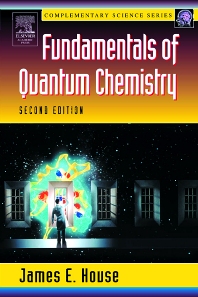Books in Classical and quantum physics mechanics and fields
Books in Classical and quantum physics mechanics and fields
- 1st Edition
- Volume 51
- December 11, 2006
- John R. Sabin + 1 more
- English
- eBook9 7 8 0 0 8 0 4 6 7 3 9 9

Advances in Quantum Chemistry
- 1st Edition
- Volume 3
- July 7, 2006
- Albert C.J. Luo
- English
- eBook9 7 8 0 0 8 0 4 8 0 9 3 0

Singularity and Dynamics on Discontinuous Vector Fields
- 1st Edition
- Volume 49
- December 20, 2005
- John R. Sabin + 1 more
- English
- eBook9 7 8 0 0 8 0 4 5 8 2 1 2

Advances in Quantum Chemistry
- 1st Edition
- Volume 79
- November 5, 2004
- Daniel Esteve + 2 more
- English
- Hardback9 7 8 0 4 4 4 5 1 7 2 8 9
- eBook9 7 8 0 0 8 0 5 3 5 4 2 5

Quantum Entanglement and Information Processing
- 1st Edition
- June 30, 2004
- Antonio Coniglio + 3 more
- English
- eBook9 7 8 0 0 8 0 4 7 4 6 8 7

Unifying Concepts in Granular Media and Glasses
- 1st Edition
- June 7, 2004
- Sy M. Blinder
- English
- Paperback9 7 8 0 1 2 1 0 6 0 5 1 0
- eBook9 7 8 0 0 8 0 4 8 9 2 8 5

Introduction to Quantum Mechanics
- 2nd Edition
- September 10, 2003
- James E. House
- English
- eBook9 7 8 0 0 8 0 5 0 7 0 4 0

Fundamentals of Quantum Chemistry
- 1st Edition
- Volume 11
- November 22, 2002
- Peter Schwerdtfeger
- English
- Hardback9 7 8 0 4 4 4 5 1 2 4 9 9
- eBook9 7 8 0 0 8 0 5 4 0 4 6 7

Relativistic Electronic Structure Theory - Fundamentals
- 1st Edition
- February 19, 2002
- Wayne M. Saslow
- English
- eBook9 7 8 0 0 8 0 5 0 5 2 1 3

Electricity, Magnetism, and Light
- 1st Edition
- Volume 186
- November 9, 2000
- R. Carroll
- English
- eBook9 7 8 0 0 8 0 5 4 0 0 8 5
